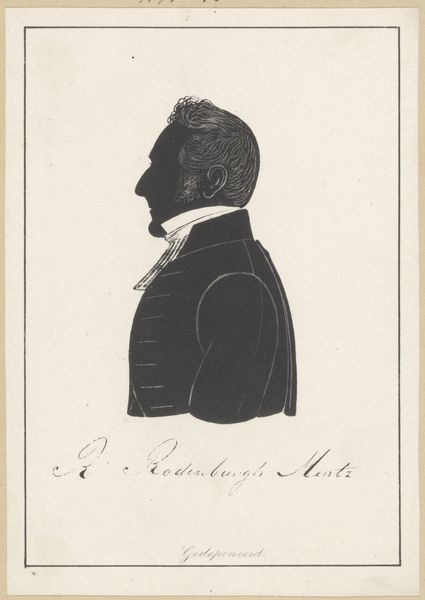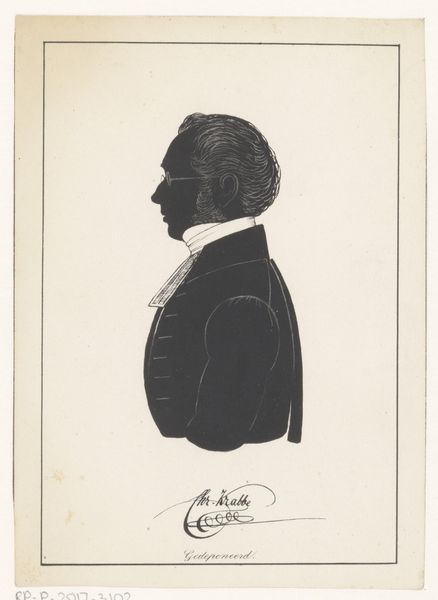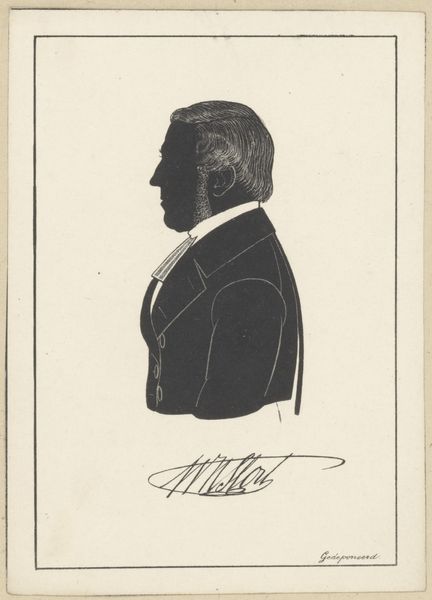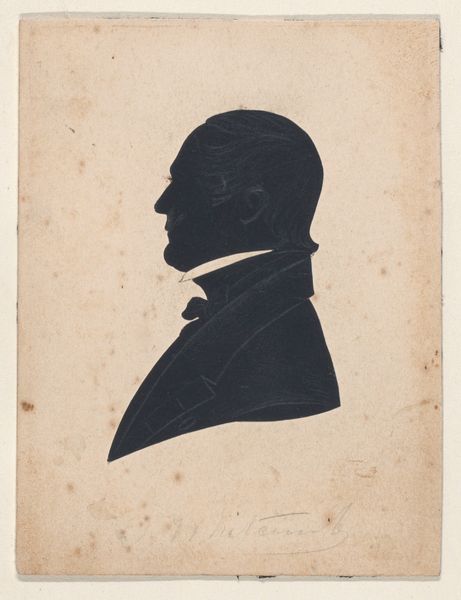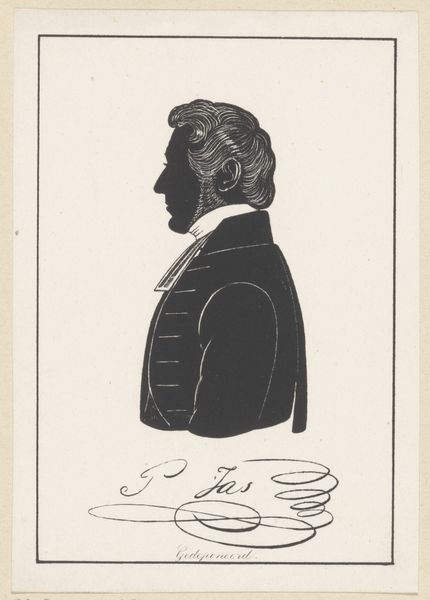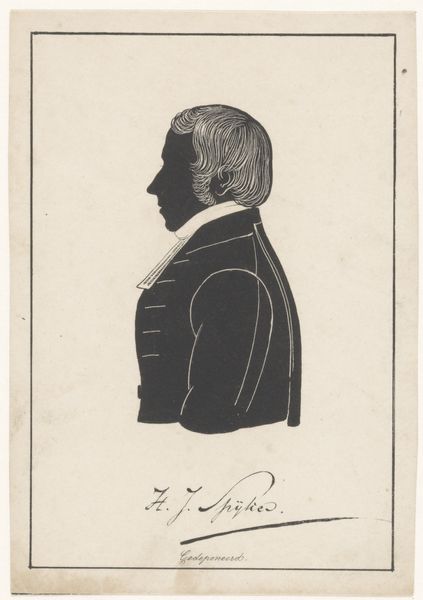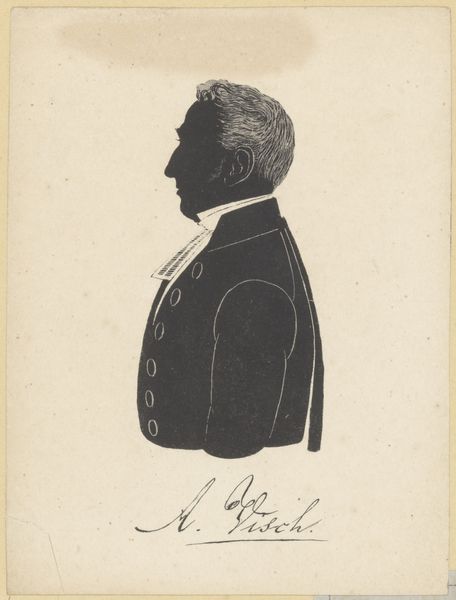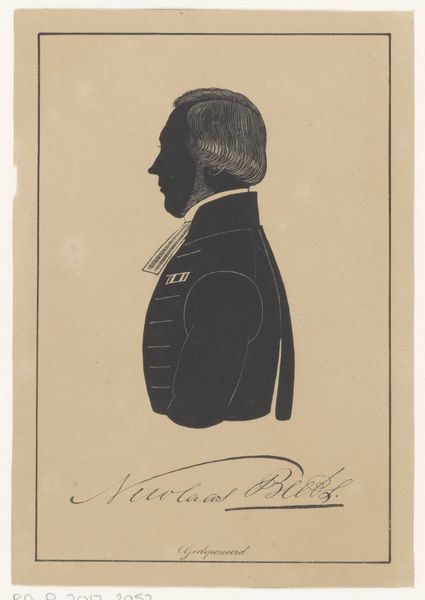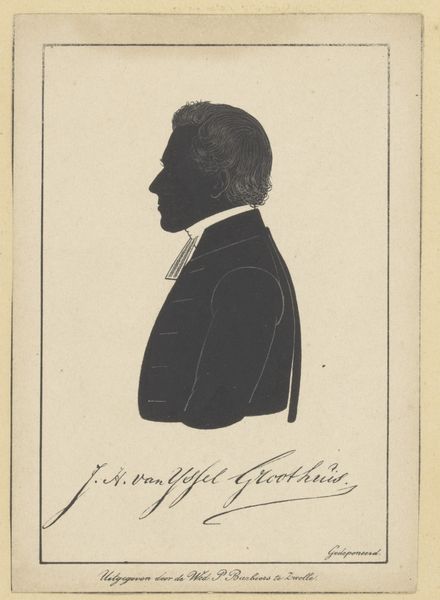
drawing, pencil
#
portrait
#
drawing
#
16_19th-century
#
caricature
#
pencil
Dimensions: height 150 mm, width 105 mm
Copyright: Rijks Museum: Open Domain
Editor: This is "Silhouetportret van Johannes Jacobus van Oosterzee," a pencil drawing likely from 1847, by Pieter Barbiers IV, housed in the Rijksmuseum. It strikes me as a very formal, almost severe portrait. What symbolic meanings can you find in such a stark depiction? Curator: This silhouette offers a compelling case study in how we distill identity. The sitter is reduced to his outline, yet the shape itself speaks volumes, doesn’t it? We see the rise of his brow, the set of his jaw – shapes recognized then and now as markers of character, of social standing. Editor: Absolutely! It’s a flattening, but it highlights specific features. Why silhouettes, though? What cultural work did they perform? Curator: Consider the silhouette as a democratizing force. Before photography, it was a relatively inexpensive way to capture and disseminate likenesses, not only suggesting their social status but, also cementing social memory of them through proliferation, ensuring individuals occupied their place. They served to recall ancestors as much as disseminate knowledge of present social standing. Even today, this simplified rendering evokes a sense of a specific era, imbuing it with a cultural nostalgia. Can you imagine any contemporary comparisons? Editor: I can see the analogy to social media profile pictures. They’re not exactly silhouettes, but they offer a curated, simplified version of ourselves for public consumption. Curator: Precisely. The need to construct and control an image endures; the medium merely evolves. What this portrait reveals is an essential aspect of human nature: the constant negotiation between individuality and representation within our cultural landscape. Editor: It's incredible how much this artwork reveals. It prompts me to question how present-day visual practices also attempt to control memory and perception.
Comments
No comments
Be the first to comment and join the conversation on the ultimate creative platform.
